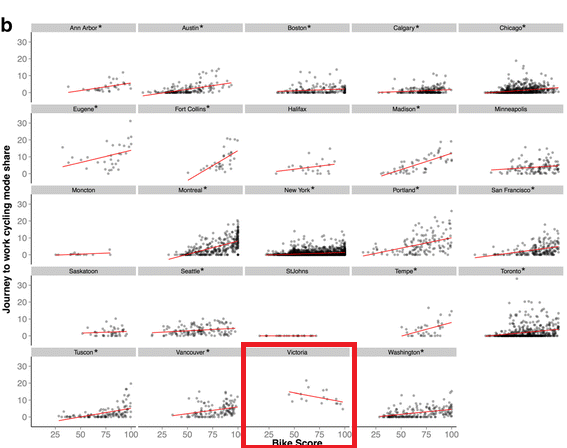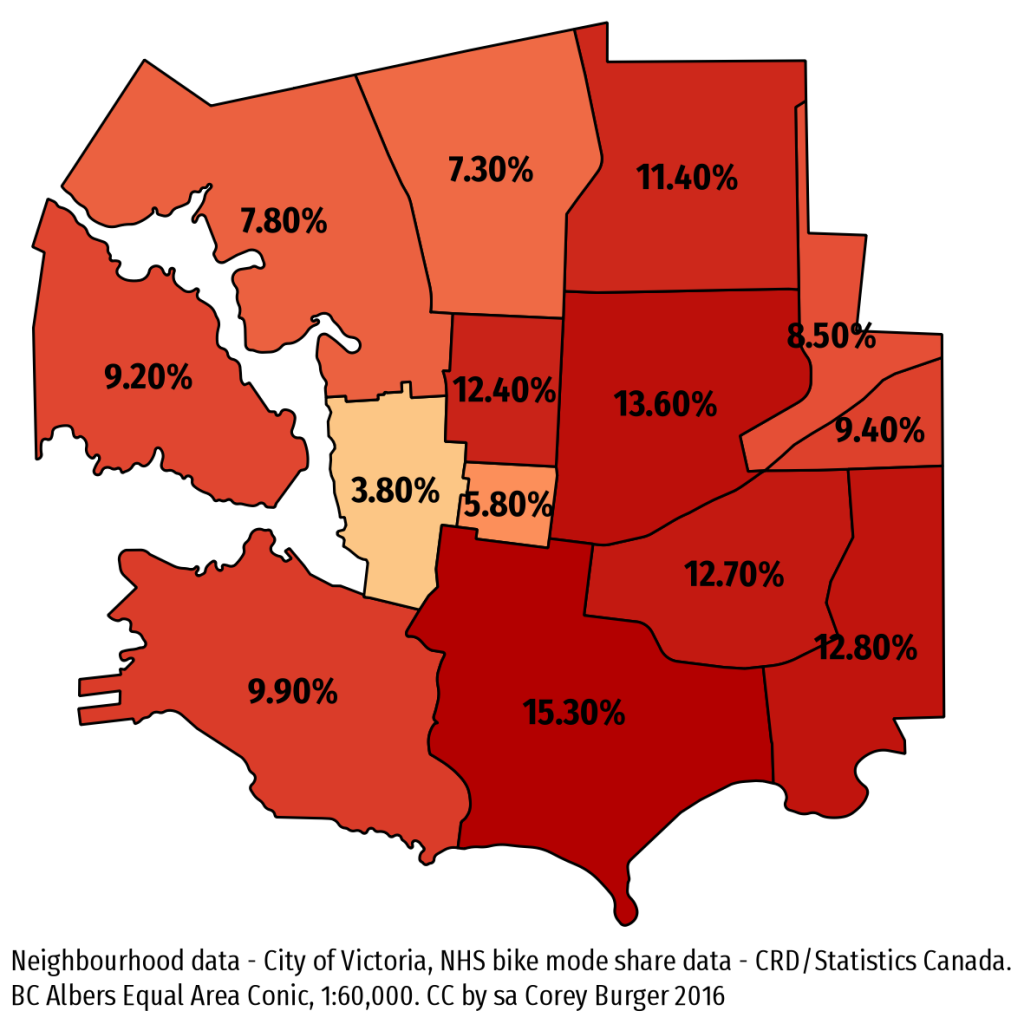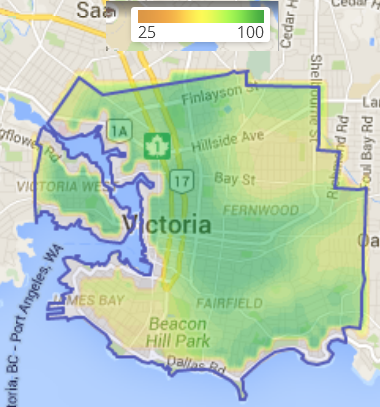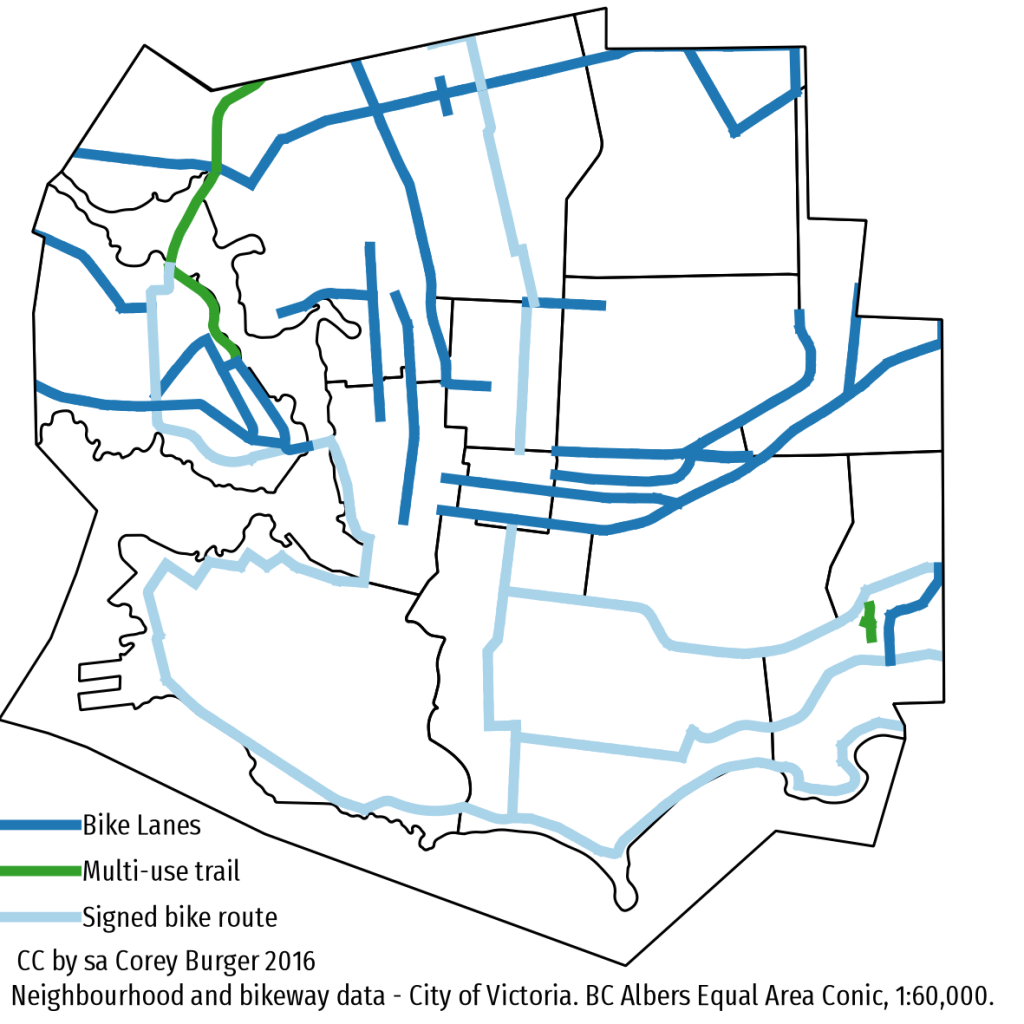So yesterday I wondered why Victoria was so odd, given our bike mode share doesn’t match our Bike Score. Today I dig into another data point: the CRD’s Origin & Destination study (PDF) conducted in the fall of 2011. When looking at all travel reasons (work, school, etc.), it lines up a lot nicer with Bike Score data:
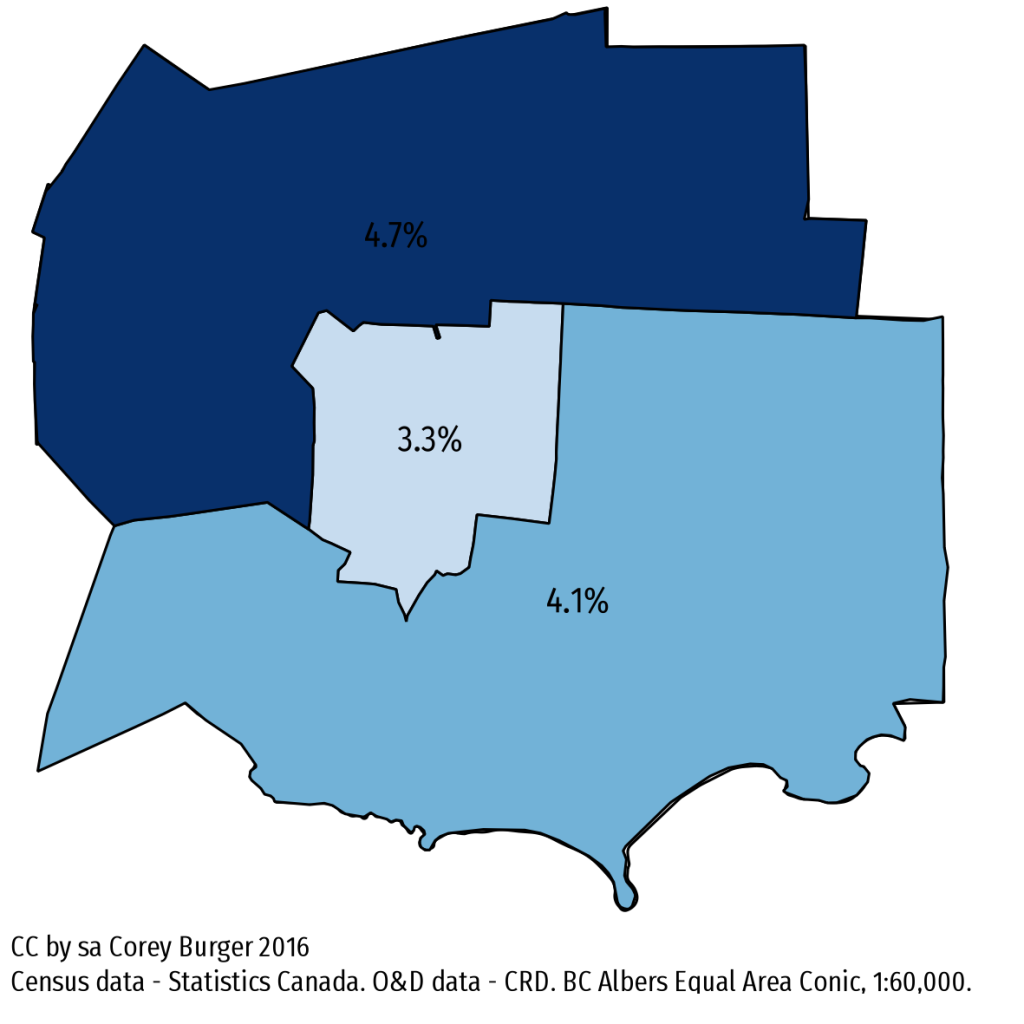
But what about the difference between this data and the NHS data we looked at yesterday? To compare them, you need the same geographies. Of course, the boundaries of these don’t quite line up (that would be too simple):
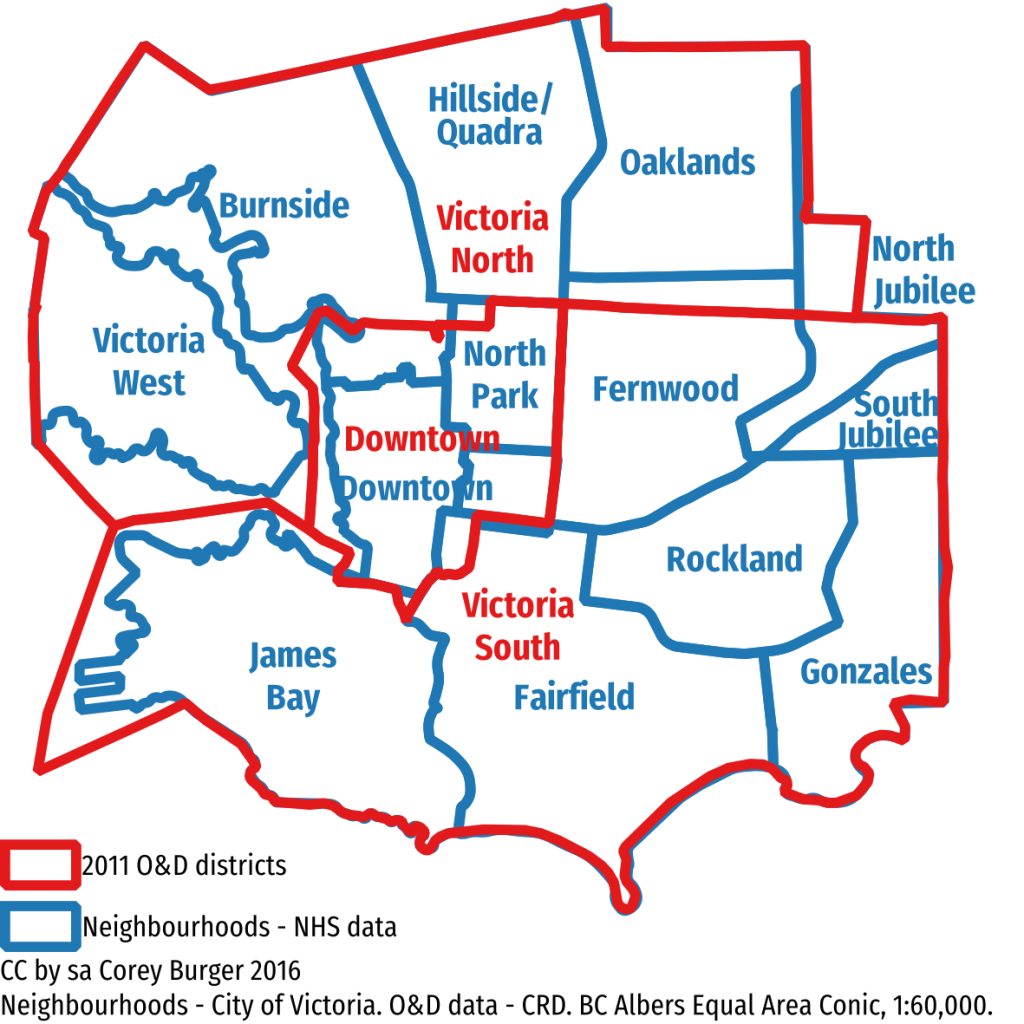
But when you compare the two using the O&D geography, comparing north to south shows the same pattern: north is higher in the CRD O&D while that is reversed in the NHS data.
| NHS (work trips only) | CRD Origin & Destination (all trips) | |
| Victoria North | 7.97% | 4.7% |
| Downtown | 8.11% | 3.3% |
| Victoria South | 12.07% | 4.1% |
What about comparing when the surveys were conducted? NHS asked about the week of May 1-7, 2011, while the Origin & Destination ran in the fall of 2011. But the weather impact should have hit both surveys equally, so that can’t explain it.
Margin of error might explain it. The CRD O&D at this level has a margin of error with between 2.8% and 9.5% (so larger than any differences). NHS doesn’t report margin of error, but it had a non-response rate of around 25%. Which is to say: take all these numbers with a grain of salt. So maybe all of this can be chalked up to bad numbers.
